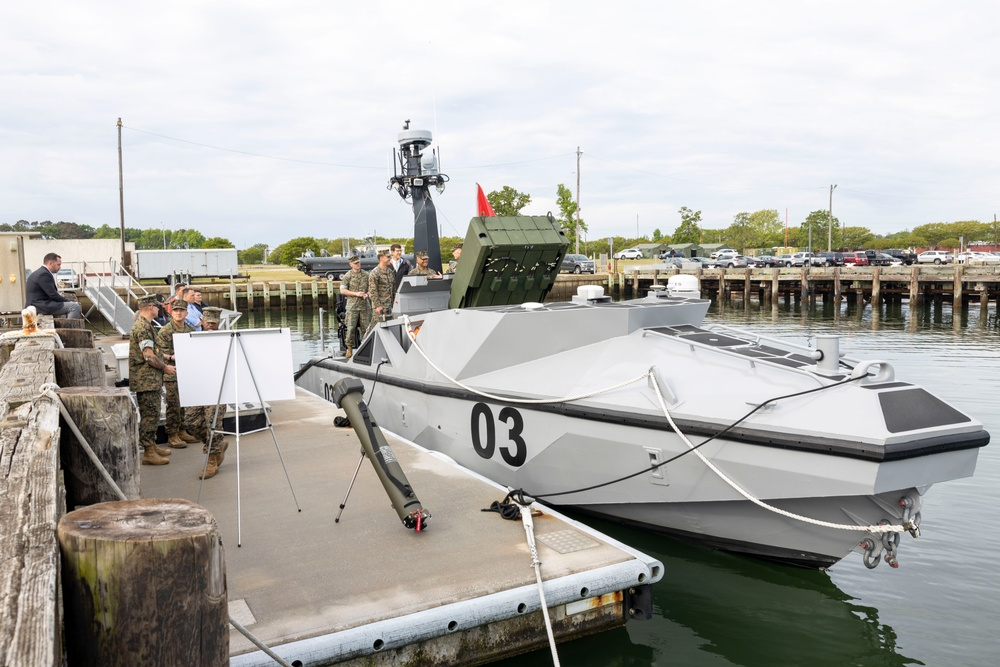
The US Marine Corps has released the first photos of its LRUSV Long Range Unmanned Surface Vessel.
Defense Visual Information Distribution Service published the photo featuring the unmanned surface vessel.
These photos capture the Marine Corps’ Long Range Unmanned Surface Vessel (LRUSV) developed by Louisiana-based shipbuilder Metal Shark and outfitted with the Uvision Hero-120 launcher.
The LRUSV is a semiautonomous vessel capable of extended travel and transporting loitering munitions that accurately track and destroy targets on sea or land.

The boat’s semi-autonomy means that it can move autonomously to its destination, checking the coordinates of the navigation system, and perform specific tasks on the spot as directed by the drone operator.
As noted, the LRUSV platform will primarily serve as an intelligence, surveillance, and reconnaissance platform.
The released photos show a ship-mounted eight-charge launcher for the Hero-120 loitering munitions, frequently referred to as ‘kamikaze drones,’ installed on the ship. The concept behind these drones is the ability to transmit camera images to the operator. This allows them to circle above a set area, scan for targets, and then attack from above.
The Hero-120, in particular, was selected in June 2021 for the Corps’ OPF-M competition to enhance the fire support capability of the LRUSV, the Light Armored Vehicle-Mortar (LAV-M), and the Joint Light Tactical Vehicle (JLTV).
According to the manufacturer, the drone can loiter for up to an hour over ranges of up to 60 km before delivering its 4.5 kg warhead.
Hero-120 can also conduct surveillance and reconnaissance functions without attacking a target and be recovered for future use. Such an option should significantly expand the reconnaissance capabilities of LRUSV.

As the budget documentation note, the development and employment of LRUSVs is a “priority” within the Marine Corps Force Design 2030 within the service’s broad reorganization that will see it become lighter and more nimble ahead of a protracted fight in the Indo-Pacific region against a future adversary like China.
Earlier, as part of the same program, the Marine Corps agreed to gradually reduce and eventually abandon the use of M1 Abrams main battle tanks and reduced the number and size of a number of units.
It is unclear what a future fleet of LRUSVs might look like. According to a 2021 Breaking Defense report, the long-term goal of the Corps is to procure up to 100 armed LRUSVs explicitly for surveillance and strike missions by 2030.
Підтримати нас можна через:
Приват: 5169 3351 0164 7408
PayPal - paypal@mil.in.ua
Стати нашим патроном за лінком ⬇
Subscribe to our newsletter
or on ours Telegram
Thank you!!
You are subscribed to our newsletter